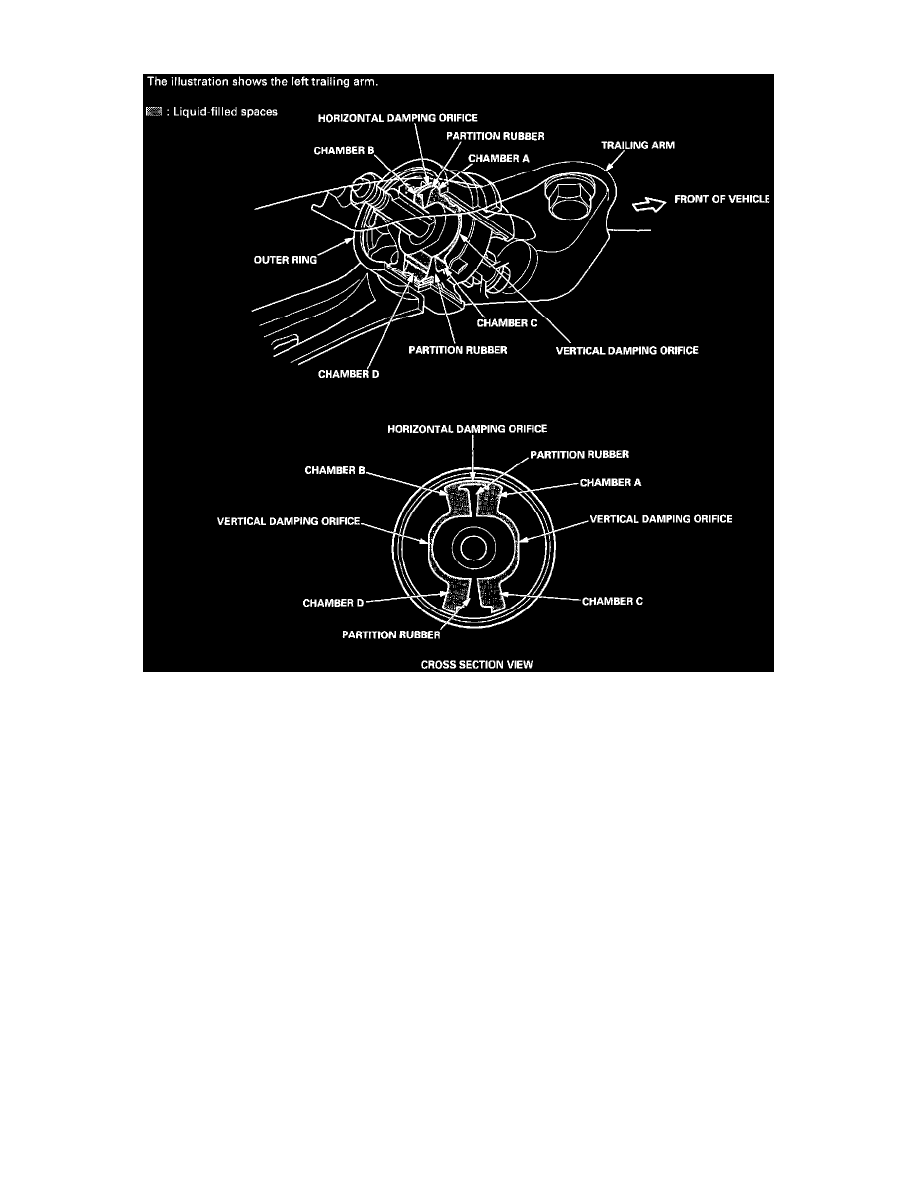TL L5-2451cc 2.5L SOHC G25A4 FI (1995)

Trailing Arm Bushing: Description and Operation
The trailing arm bushing is a hydraulic type. The low dynamic spring rate and high damping force of this type of bushing allow highly efficient damping
of vibrations and shocks transmitted from the wheel. The interior of the bushing is separated into four hydraulic chambers connected by three orifices.
One orifice is for horizontal damping, and the other two orifices are for vertical damping.
The horizontal damping orifice mainly serves to achieve high damping force. When a force directed toward the rear of the vehicle acts on the bushing,
chambers A and C are compressed, while chambers B and D expand. Liquid flows from chambers A and C through the horizontal damping orifice into
chambers B and D, damping the shock by means of the fluid's viscosity and resonance. When a force directed toward the front of the vehicle acts on the
tire, the opposite chambers compress and expand.
The vertical damping orifices mainly serve to achieve a low dynamic spring rate. When a force directed upward acts on the bushing, chambers A and B
are compressed, while chambers C and D expand. Liquid flows from chambers A and B through the vertical damping orifices into chambers C and D.
When there is a downward-directed force, the opposite chambers compress and expand. This vertical flow causes resonance in the liquid, which limits
the dynamic spring rate to a frequency range of 50 - 200 Hz, damping forces transmitted to the vehicle body.
